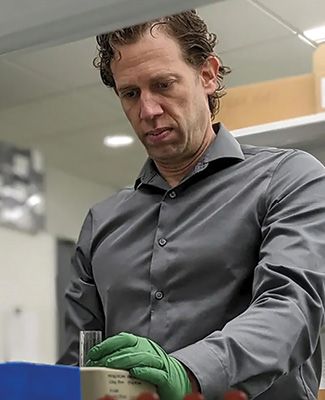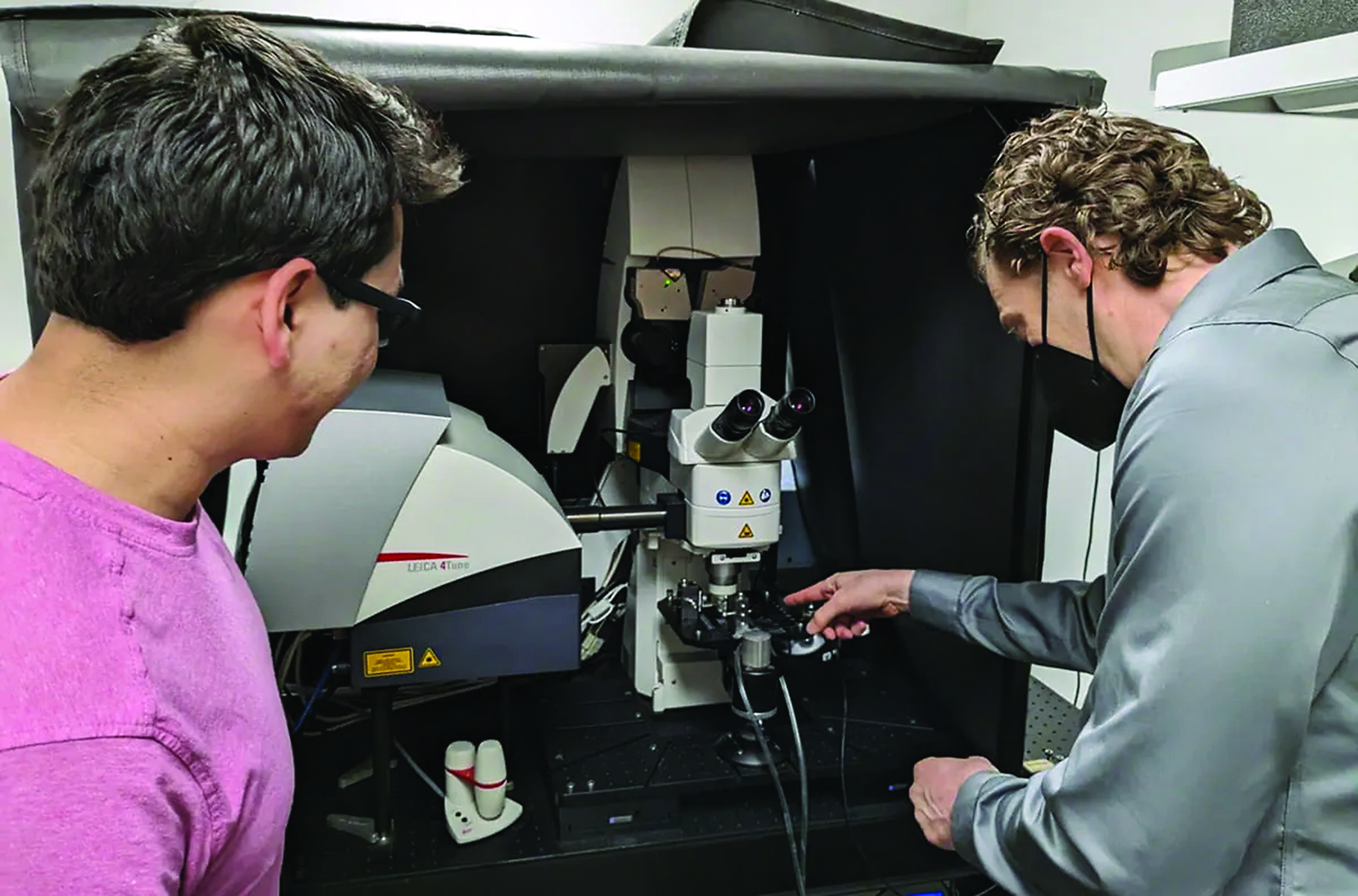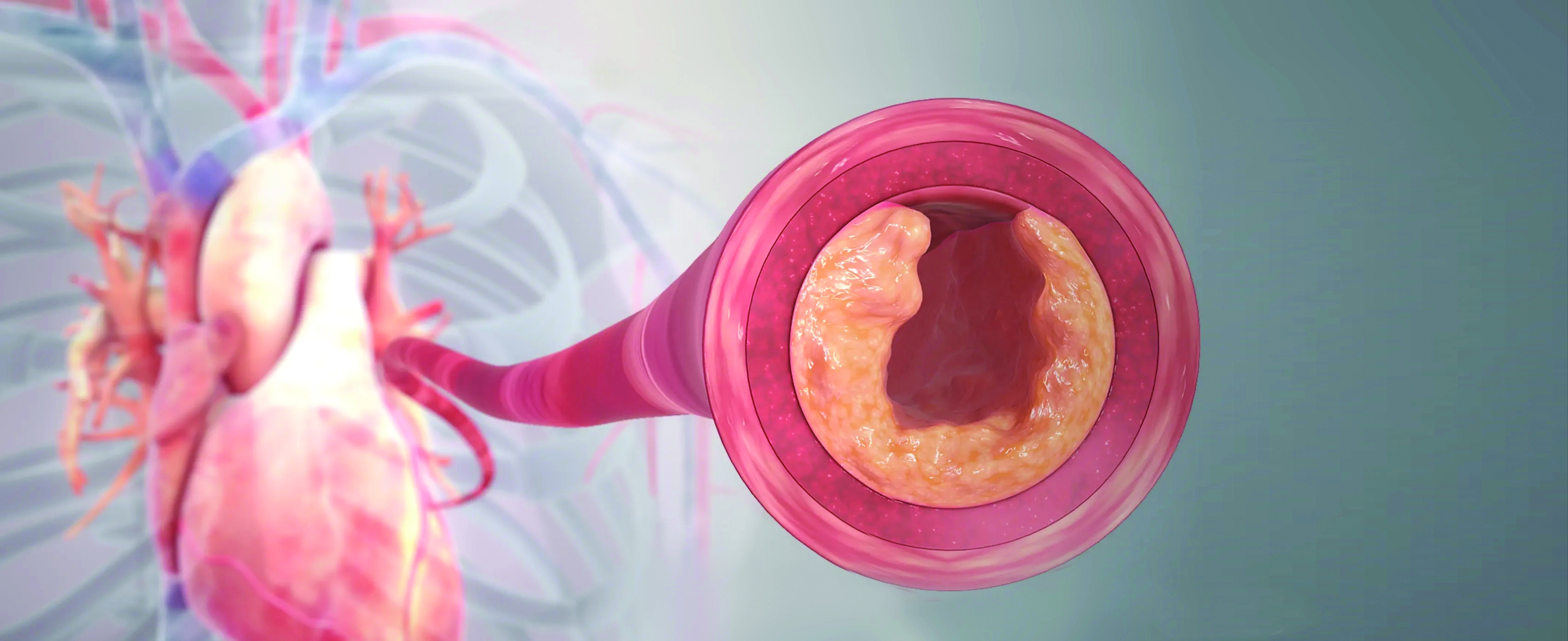Ask the Expert: Can Nanomedicines Help Fight Cardiovascular Disease?

Ask the Expert: Can Nanomedicines Help Fight Cardiovascular Disease?
Bryan R. Smith talks to us about nanomedicines and their growing role in fighting cardiovascular disease.
June 14, 2023“Came for the basketball, stayed for the science,” jokes researcher Bryan Smith about coming to East Lansing from Northern California in 2018. “Really, a former Stanford colleague offered me the tremendous opportunity to help jump-start the new Institute for Quantitative Health Science and Engineering (IQ) and a new department, Biomedical Engineering.” The Ohio native is glad to be back in the Midwest.
Smith is an associate professor in the Department of Biomedical Engineering and director of the MSU T-NIE Lab—the Translational NanoImmunoEngineering Lab—in IQ. He and his team are developing new, innovative diagnostics and therapeutics to help patients affected by cardiovascular disease, the world’s leading cause of death.
“Both of my grandfathers passed due to heart attacks,” Smith said. “That was really my inspiration to pursue cardiovascular medicine.” That, coupled with “a growing internal agitation toward diseases that I naively thought should’ve been mostly solved by then” tells you everything you need to know about Smith’s commitment to his work.
In particular, Smith’s focus is nanomedicines: tiny, versatile particles that researchers are engineering to zero in on problem sites in the body to maximize a treatment’s power and minimize its side effects.
Smith was recently invited by the journal Nature Cardiovascular Research to provide an overview of nanomedicines in the realm of heart health for the research and clinical communities. We caught up with him to ask a few questions about what his work could mean for the world.

over a microscope in Smith’s lab.
What is cardiovascular disease?
When we talk about cardiovascular disease, it isn’t just one thing. It’s all the issues that can affect the heart and blood vessels as well as the blood. It could be a disorder of the myocardial tissue that’s pumping the blood, or a pacemaker issue, or ischemia, which is a lack of blood supply to a region. There are lots of different blood vessel disorders that all fall under cardiovascular diseases as well.
I recently had a relative with a cardiovascular disease who needed open-heart surgery. That was scary, but it didn’t scare me as much as when I learned another relative had cancer. I feel like I didn’t fully appreciate its severity. Why do you think that is?
Part of that fear is that cancer is us: Our own cells have gone “bad,” and now they’re attacking us. There’s something intrinsically frightening about that. When it comes to cardiovascular disease, on the other hand, I believe people think that it’s basically your plumbing has gone bad. It’s something that just is supposed to happen over time. For most cardiovascular diseases, that’s simply not true. The pathogenic mechanisms of a number of cardiovascular diseases actually parallel those of cancer. We now know that cardiovascular disease is not just a disease of old age but something that can happen at any time in our adult lives.
What makes it so lethal?
The reason that cardiovascular diseases are so deadly is because every cell, every cubic millimeter of our body, depends on our heart to pump and perfuse blood and nutrients that we need to live. Thinking in that way, then, it becomes kind of obvious that if something goes wrong, it could be lethal.
What are the opportunities for nanomedicine in the fight against cardiovascular disease?
One of the key limitations in current diagnostics and therapeutics is their propensity to cause unintended consequences or adverse side effects.
What if you could avoid most side effects by getting the medication exactly where you want it to go and nowhere else? Nanomedicines can be engineered to be extremely, exquisitely selective for particular cells or particular organs, which would then lead to reduced or, ideally, no side effects. This is where nanomedicine started. The first nanomedicines didn’t actually treat the disease any better than the regular medicine, but they reduced side effects.
Nanomedicines can also be multifunctional. A nanomaterial can contain a drug, or even lots of drug molecules, but it also can have certain mechanical, immunological and even electrical properties. That’s really attractive, especially in cardiovascular tissues where those properties are all critical to proper function.

Can you share an example of what you’re working on in cardiovascular nanomedicine?
One of the things we’re doing is stimulating immune cells essentially to clean up the mess within atherosclerotic plaques. When most people think about cardiovascular disease, they’re thinking about heart attacks. Atherosclerosis—the buildup of plaque in the arteries—is what causes the vast majority of heart attacks.
That makes it one of the key areas to treat if you want to reverse this statistic of cardiovascular disease being the No. 1 killer of humans worldwide. We colloquially refer to it as “taking out the garbage.”
We’ve shown in preclinical trials that this nanotherapy decreases plaque size, stabilizes plaques and lowers inflammation in the disease site. That’s likely to be critical in the continuing treatment and care of plaques.
Where are nanomedicine therapies for cardiovascular disease in the pipeline now? How long before they might be ready to treat patients?
We’re still early in this field, especially compared with cancer nanomedicine. But cardiovascular trials do exist. I think we’ll see quite a few more clinical trials within the next five to 10 years, and I hope individuals will be on the lookout for those and consider enrolling if it’s something that they and their physicians agree could help.
Read the full Q&A: https://msutoday.msu.edu/news/2023/ask-the-expert-cardiovascular-nanomedicine-bryan-smith
Contributing Writer(s): Matt Davenport




